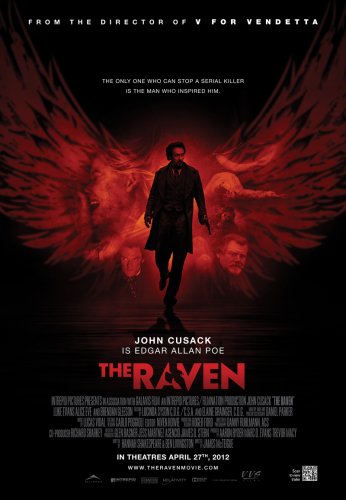

Detective Fields reads 'The Murders in the Rue Morgue' story from the book 'Tales of the Grotesque and Arabesque'.
'Grotesque and Arabesque' was published in 1840, one year before 'The Murders in the Rue Morgue' was first published.
The fire marshal's hat and coat have the common misspelling "FIRE MARSHALL.
" Poe is asked if he had written anything about a sailor, and responds "No.
" In truth, Poe had written quite a few stories about sailors, including "MS.
Found in a Bottle," "A Descent into the Maelstrom," "The Murders in the Rue Morgue," and "The Narrative of Arthur Gordon Pym," among others (including "King Pest" and a brief sequence in "The Premature Burial").
In one scene, a newspaper is seen with a headline containing the phrase "Serial Killer.
" While the film is set in 1849, the term "Serial Killer" did not exist until well into the 20th century.
Various sources state that the term was coined in either the 1960s or 1970s.
When Poe is punched in the face by Captain Hamilton, Poe slowly brings a handkerchief to his face.
After a few seconds of screen time with Detective Fields and Captain Hamilton, Poe is once again shown raising the handkerchief to his face.
It looked exactly as he had been doing it the first time (same motion as before, same blood position as before).
When Reynolds pours the poison into the little glass, he fills it to the brim.
However, when he pushes the glass over to Poe, the glass is just about 2/3 to 3/4 full.
At the end, Ivan says he is off to do the same to Jules Verne.
However, in 1849, when the film is set, Verne had not published any writing and was absolutely un-heard of.
Verne's first published work was 'Cinq Semaines en ballon' in 1863, 14 years after Poe's death.
His first well, known work 'Voyage au centre de la Terre' was not published until 1864.
When Detective Fields is chasing Reynolds in tunnels at one point he blows out the lantern.
In next scene we can see him running with lit lantern.
In one scene doctor is using a magnet to locate a bullet in body.
Bullet is made of lead and lead is not magnetic and therefore cannot be detected using a magnet.
Poe places his lantern on the table before pushing it over, lantern and all, to reveal the trapdoor.
He then picks the lantern up from the floor, upright and still lit.
The dance that begins the ballroom scene is Pyotr Ilyich Tchaikovsky's "Waltz", from his "Children's Album", (Opus 39 no.
It is incorrectly identified as "No.
9" in the film's credits; and, (dating from 1878), it hadn't been written at the time of Poe's death.
The detective tells Poe that the victim had her throat cut with a "straight razor".
A straight razor was just called a razor until the invention of the safety razor many years later.
The Baltimore City Police badges worn by the uniformed officers in the film were not issued until late 1851.
Also, the revolvers in the opening scene look to be later (even if they were indeed 1847 Colt Walkers, this would be rare for a police dept.
like Baltimore to have in 1849).
In the opening scene of the movie, it says Edgar Allan Poe was found near death on a park bench in Baltimore, Maryland on October 7, 1849.
However, it is known he was hospitalized days before on October 3, 1849, and did not die until the seventh of October.
Both Emily and Poe used the phrase, "Ok" several times.
"Ok" in the 1800's was a colloquial phrase meaning "oll korrect" (all correct), not an indication of assent (as used by Emily) or reassurance (as used by Poe.
) In the pendulum scenes, the victim spits up lots of blood all around his face, chin, and neck.
In the flyover shot after the pendulum stops, there is no blood.
The pistol Captain Hamilton points at Poe in the carriage, in 1849, is a Remington double-barrel derringer, not produced until 1866.
Towards the end of the film, Detective Fields knocks over an ink bottle and empties the desks contents haphazardly.
The ink bottle lid and magnet change position between shots.